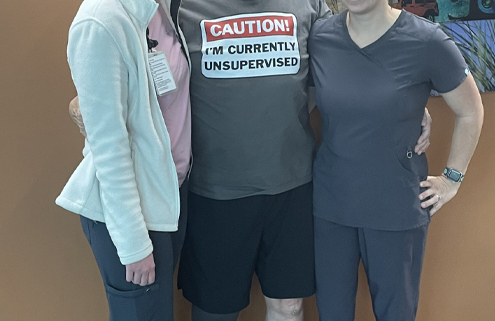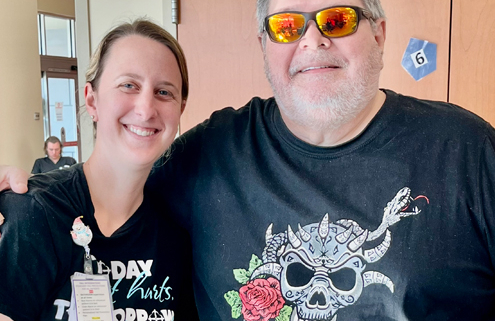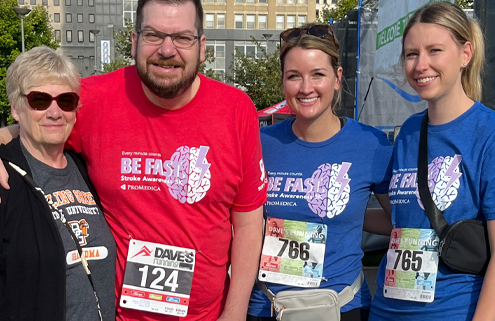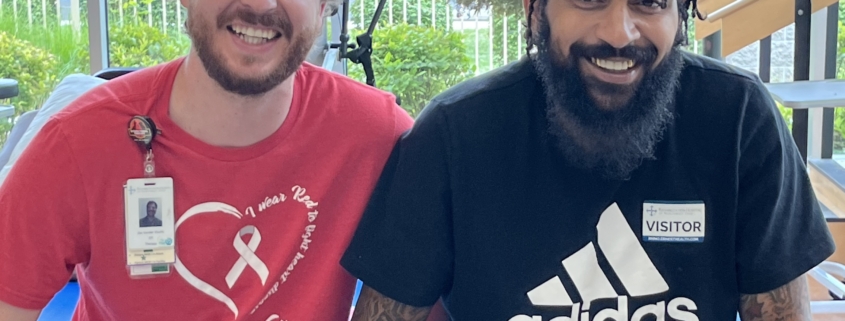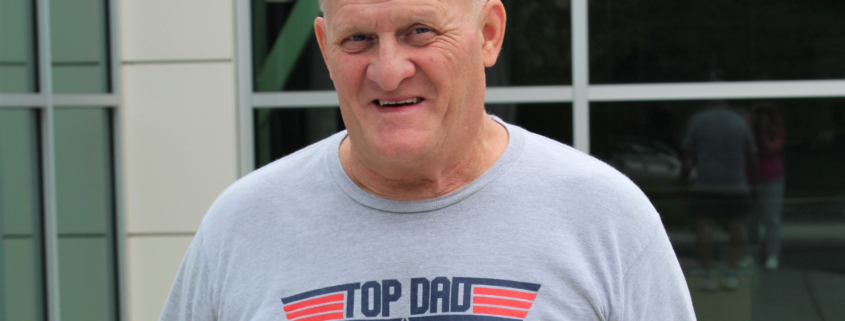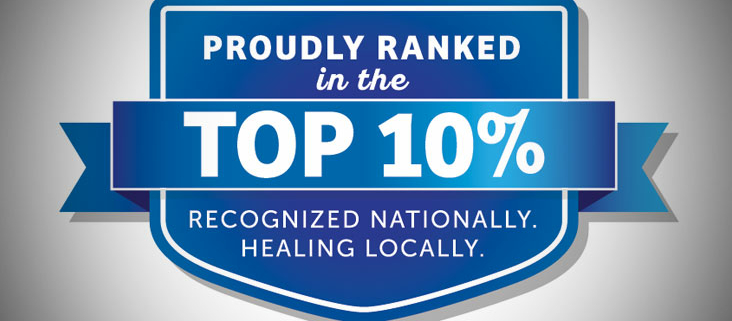Seventy-year-old Dennis Gawronski struggled with a wound on his right foot that wouldn’t heal. After performing several procedures, doctors determined he needed a below-the-knee amputation…
After a joint replacement surgery, Thomas Momsen chose Rehabilitation Hospital of Northwest Ohio (RHNO) for his rehabilitation…
Doug Fullerton faced a series of life-threatening health challenges, including a heart attack, open heart surgery, two strokes, and sepsis. He spent 41 days in an acute care hospital before being admitted to Rehabilitation Hospital of Northwest Ohio…
After experiencing a stroke in 2022, 51-year-old Michael Tucker was admitted to Rehabilitation Hospital of Northwest Ohio for rehabilitation. While there, Michael was challenged by his doctors, nurses, aides, and therapists…
After suffering a traumatic spinal cord injury, Anthony Mershon received 21 days of therapy at Rehabilitation Hospital of Northwest Ohio.
Sixty-one-year old truck driver, Chris Combs of Findlay, Ohio, suffered multiple trauma after a trucking accident. He came to Rehabilitation Hospital of Northwest Ohio with two broken arms, two broken shoulders…
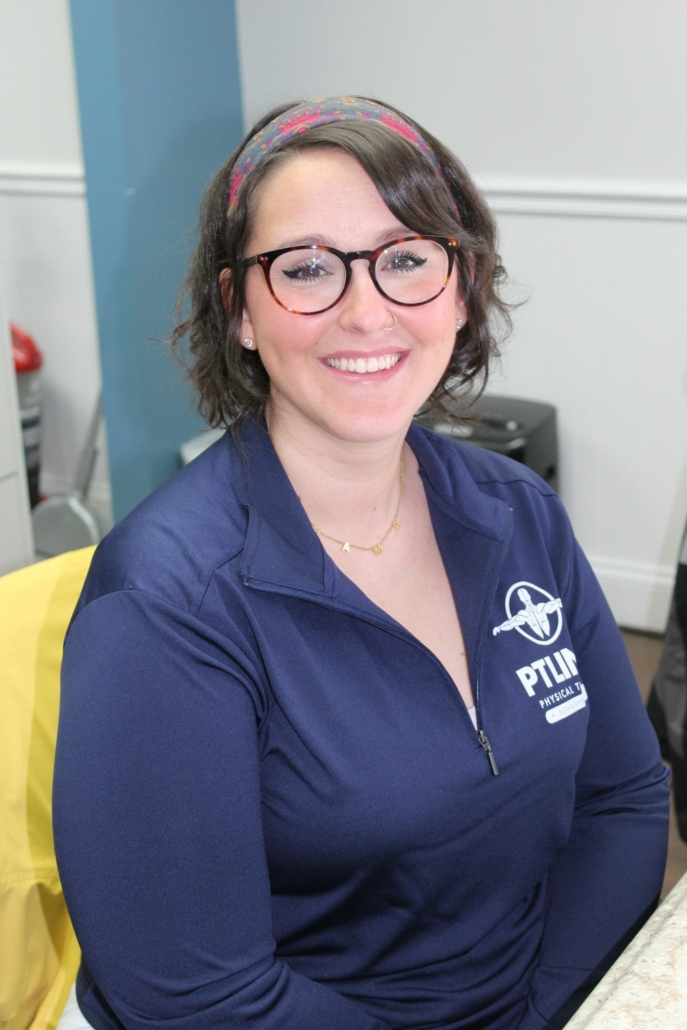
Kylie Justice didn’t even know she had COVID-19. At the time, Kylie was a 32-year-old single, working mom with two kids, ages 4 and 7. She had no symptoms until she woke up one morning, unable to feel her body from the neck down.
Kylie was paralyzed.
At the hospital, doctors diagnosed Kylie with a rare condition called post-COVID neuropathy. The diagnosis blindsided Kylie and left her unsure of what to do or where to turn.
Fortunately, inpatient rehabilitation provided Kylie an opportunity to regain the function and independence that COVID had stolen from her. She was accepted to Rehabilitation Hospital of Northwest Ohio in Toledo.
When Kylie discharged from the acute care hospital, RHNO’s transport driver, Scott, was there to pick her up. “He was so nice and friendly,” Kylie recalled. “He chatted with me the whole trip.” This encounter kicked off a very positive experience, particularly in contrast to Kylie’s challenges.
“I was blown away by my experience,” Kylie said of her time at the inpatient rehabilitation hospital.
“The building was so beautiful; the private rooms with your own bathroom and the wonderful therapy area were so nice. The therapy team was amazing! My short-term memory was not functioning, and the therapists wrote everything down, which meant so much.”
Kylie also wanted to particularly call out several employees at RHNO that impacted her stay.
“Karen helped me with so many life skills and took care of me in such a kind manner. She braided my hair and taught me how to shower and dress, which was so hard to accomplish at the time. Adam and Dave were so great and encouraged me and pushed me to do things I was afraid to do. Pretty soon, I was standing and taking steps on the parallel bars and working with my hands to move pegs and pull on my clothes.”
“The staff was wonderful,” she continued. “Everyone….all the aides, RNs, therapists…everyone! They were all so kind to me! Plus, the food was so good! I loved that!”
Upon completing her stay, Kylie received an acknowledgment of her hard work and achievement, as does every patient at RHNO. “On the last day, they did a celebration clap, and I cried like a baby. I didn’t want to leave!”
That hard work paid off for Kylie. “Today, I am walking with just cane assistance. I am working, driving, and, most importantly, taking care of my kids and being a mom! I would never want this to happen again, but if I had to choose a therapy place again, I would choose Rehabilitation Hospital of Northwest Ohio! Thank you so much!”
Rehabilitation Hospital of Northwest Ohio has been named in the Top 10 percent of inpatient rehabilitation facilities in the United States. The hospital’s care was cited as being as being patient-centered, effective, efficient and timely.
“We strive to deliver this higher level of care as our standard,” says Scott Williams, CEO of Rehabilitation Hospital of Northwest Ohio. “We have graciously been recognized as a top performing facility, but we never take it for granted. Our staff is exceptionally passionate about helping patients reach their full potential through the care we provide. We work daily to ensure patients are reaching their highest levels of ability and independence.”
Rehabilitation Hospital of Northwest Ohio was ranked in the Top 10 percent from among 870 inpatient rehabilitation facilities nationwide by the Uniform Data System for Medical Rehabilitation (UDSMR), a non-profit corporation that was developed with support from the U.S. Department of Education, National Institute on Disability and Rehabilitation Research. The UDSMR maintains the world’s largest database of rehabilitation outcomes.
“If you take into account that a national study has previously shown that inpatient rehabilitation facilities provide better long-term results for patients, being ranked at the top of that group validates the quality of care we provide,” says Dr. Tallat Rizk, Medical Director of Rehabilitation Hospital of Northwest Ohio, referencing a study commissioned by the ARA Research Institute that showed patients treated in inpatient facilities experienced improved quality of life as compared to skilled nursing facilities.
“To provide the highest level of rehabilitative care available in the United States to our own community is truly rewarding,” Rizk says. “This means our family, friends, and colleagues don’t need to leave the area to receive the best care available.”
Through the UDSMR, RHNO also will collaborate with peers throughout the nation to share information and establish best practices for patients. “This helps elevate rehabilitative care for everyone across the United States,” Rizk says.
Rehabilitation Hospital of Northwest Ohio provides specialized rehabilitative services to patients who are recovering from or living with disabilities caused by injuries, illnesses, or chronic medical conditions. This includes, but is not limited to, strokes, brain injuries, spinal cord injuries, orthopedic injuries, cerebral palsy, ALS (Lou Gehrig’s Disease), multiple sclerosis, and Parkinson’s disease.
About Ernest Health
Rehabilitation Hospital of Northwest Ohio is part of Ernest Health, a network of rehabilitation and long-term acute care hospitals. Ernest Health hospitals see patients who are often recovering from disabilities caused by injuries or illnesses, or from chronic or complex medical conditions.Read More
Quick Reference Links
• Contact Us• Career Opportunities at this Hospital
• Price Transparency
• About Ernest Health

